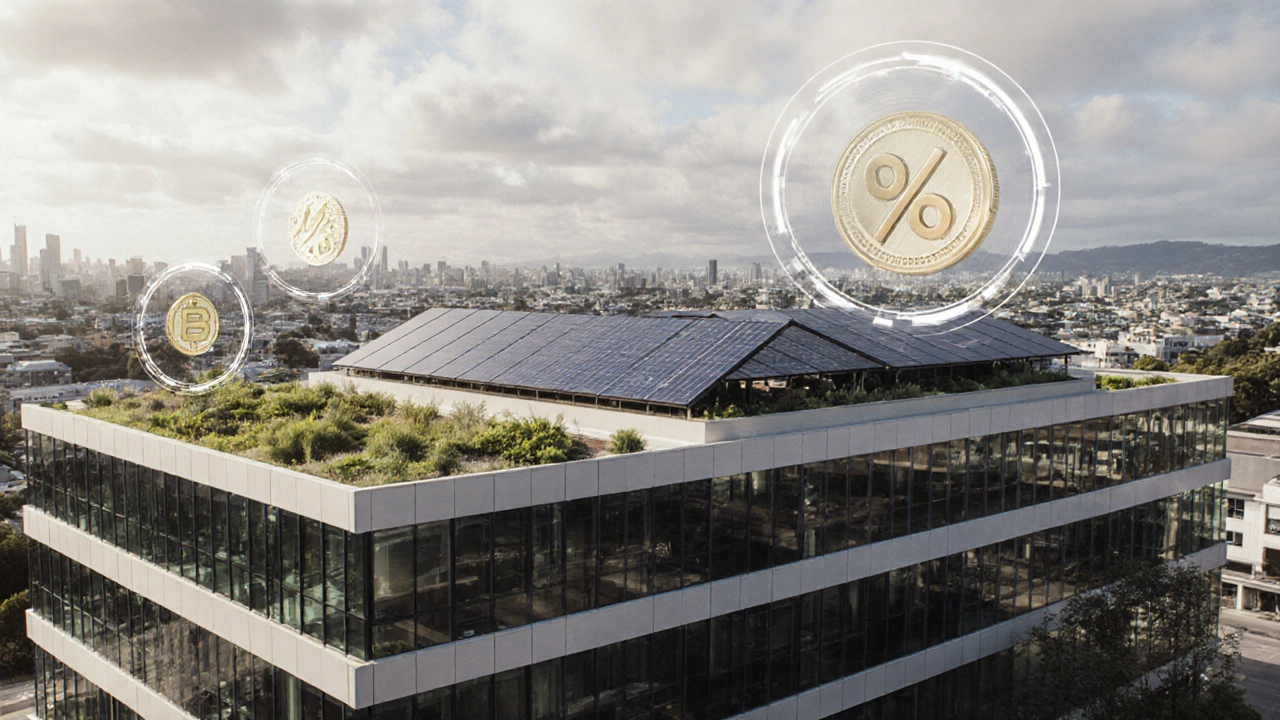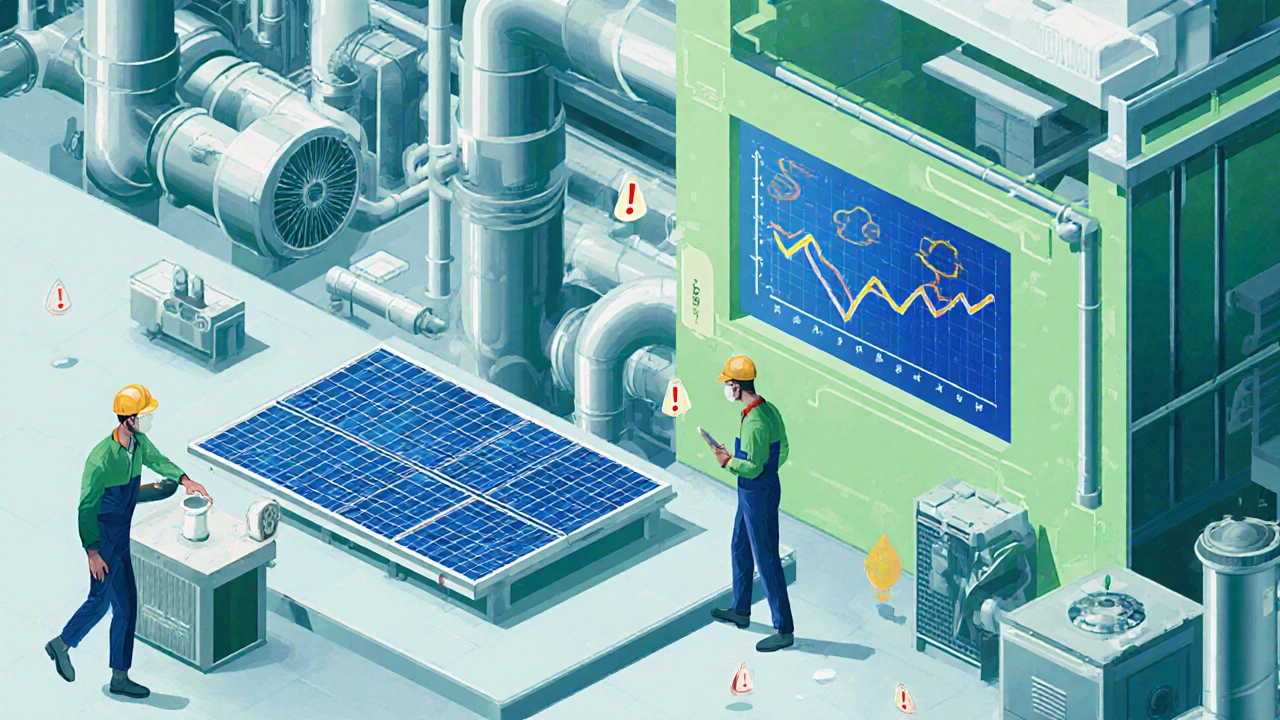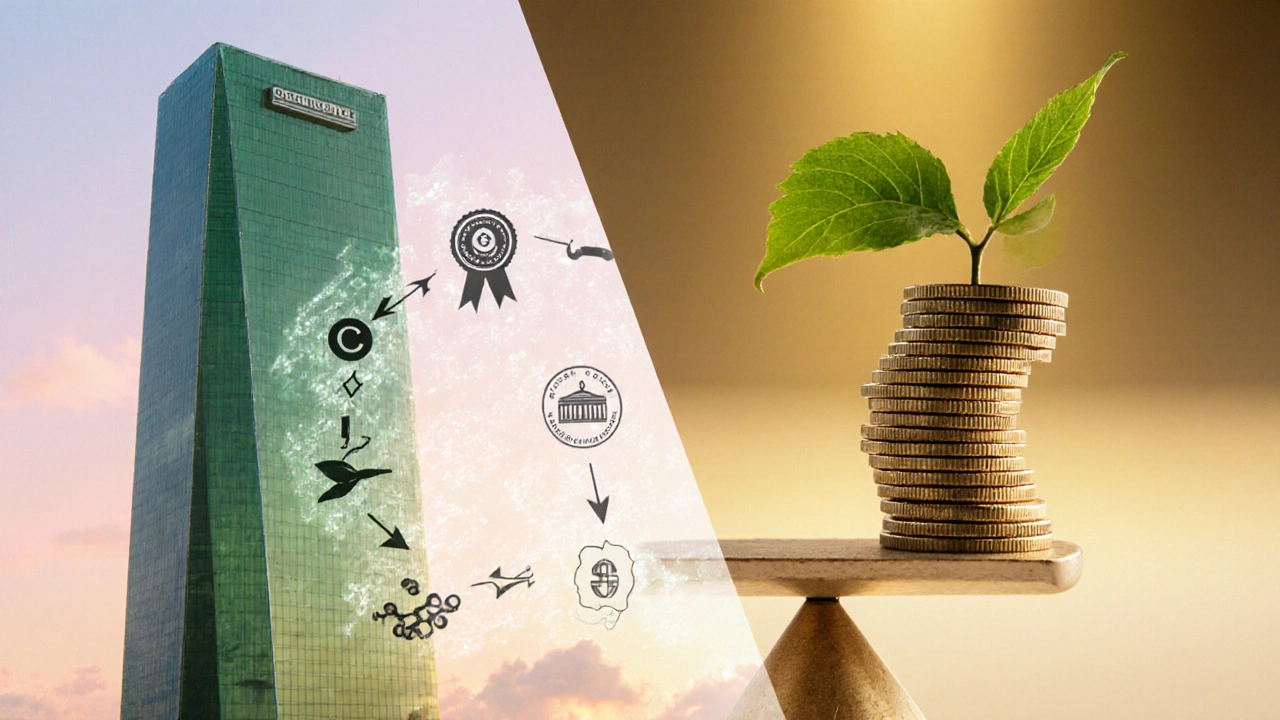Downsides of Green Buildings: Hidden Costs and Challenges
 Oct, 4 2025
Oct, 4 2025
Green Building Cost Calculator
Estimated Green Building Challenges
Green buildings promise lower carbon footprints and healthier spaces, but the reality often includes hidden drawbacks that can surprise owners and developers. Understanding these green building downsides helps you weigh the true value of sustainable design before committing.
Higher Up‑Front Capital Costs
When you first hear about a green building, the biggest eye‑catcher is the promise of long‑term savings. Yet the initial expense can be 10‑30% higher than a conventional structure. This premium comes from specialized materials, energy‑efficient systems, and certification fees. For a 150‑square‑metre office in Wellington, the extra cost could be NZ$300,000-NZ$900,000, a sum that can strain cash‑flow for small developers.
Embodied Carbon and Material Trade‑offs
Embodied carbon is the total greenhouse‑gas emissions generated during extraction, manufacturing, transport, and disposal of building materials. While operational emissions drop, the carbon locked in concrete, steel, or recycled composites may offset those gains, especially if low‑carbon alternatives are sourced from far‑away regions.
Choosing certified timber, for instance, reduces operational energy but can increase embodied carbon if the wood travels overseas. Developers must run life‑cycle assessments to avoid swapping one impact for another.
Complex Maintenance and Operational Challenges
Green buildings rely on sophisticated systems-high‑efficiency HVAC, solar arrays, rainwater harvesting, and smart lighting. These systems require regular calibration and skilled technicians. A study by the New Zealand Green Building Council in 2023 showed that maintenance costs for certified buildings were 12% higher over a ten‑year period compared with conventional peers.
If the building manager lacks the expertise, performance drops, and the promised energy savings evaporate.
Performance Gaps and Indoor Air Quality Risks
There's a growing body of research indicating that many green buildings under‑perform relative to design simulations. Tight envelopes meant to improve insulation can trap pollutants, leading to poorer indoor air quality if ventilation isn’t properly balanced.
For example, a 2022 Australian case study found that occupants in a net‑zero office reported 15% higher rates of respiratory irritation, traced back to insufficient fresh‑air exchange and volatile organic compounds (VOCs) from low‑cost sealants.

Regulatory and Certification Hurdles
LEED certification is a globally recognized green building rating system that evaluates design, construction, and operation across several categories can add layers of paperwork, audits, and fees. In New Zealand, the cost to register and certify a mid‑size commercial project can exceed NZ$25,000, not to mention the time spent gathering documentation.
Delays in obtaining certification may push project timelines, affecting financing and market launch.
Limited Design Flexibility
Achieving certain sustainability targets forces architects to make compromises. For instance, maximizing daylight often means limiting the depth of floor plates, which can reduce usable floor area. Similarly, incorporating green roofs adds structural load, restricting roof‑top designs.
These constraints can clash with client aesthetic preferences or functional requirements.
Market Perception and Resale Value Uncertainty
While many buyers appreciate eco‑friendly features, the premium they’re willing to pay isn’t guaranteed. A 2024 analysis of Wellington residential sales showed only a 2‑3% price uplift for homes with green certifications, far lower than the 7‑10% uplift for upgraded kitchen or bathroom renovations.
Potential resale buyers may prioritize location or square footage over sustainability credentials, leading to a longer time on market.
Comparison of Major Downsides
| Downside | Typical Impact | Possible Mitigation |
|---|---|---|
| Higher upfront costs | 10‑30% increase in CAPEX | Leverage government incentives, phased implementation |
| Embodied carbon | Carbon locked in materials may offset operational savings | Local low‑carbon material sourcing, life‑cycle analysis |
| Complex maintenance | 12% higher long‑term OPEX | Train staff, use integrated building management systems |
| Performance gaps | Energy use higher than modeled | Post‑occupancy monitoring, adaptive control strategies |
| Certification hurdles | Additional NZ$25k+ fees and timeline delays | Early planning, engaging accredited consultants |
| Design restrictions | Reduced floor area, structural load limits | Iterative design, use of lightweight green technologies |
| Resale uncertainty | Modest price premiums, longer sale cycles | Educate buyers, highlight operating cost savings |
Practical Tips for Managing the Drawbacks
- Run a full life‑cycle cost analysis before committing; include both operational and embodied carbon.
- Secure local incentives early-New Zealand’s Sustainable Building Fund can offset up to 20% of material costs.
- Partner with a facilities team trained in renewable‑energy system upkeep to avoid performance decay.
- Incorporate flexible design modules (prefabricated green walls, adjustable shading) to keep aesthetic freedom.
- Document performance data during the first year and share it with prospective buyers to justify the premium.

Frequently Asked Questions
Do green buildings always save money on energy bills?
Not always. Savings depend on proper system design, commissioning, and user behavior. Without ongoing maintenance, energy use can match or exceed that of conventional buildings.
What is the biggest hidden cost of a green building?
Embodied carbon in high‑impact materials and the extra maintenance required for sophisticated systems are often overlooked during budgeting.
Can I achieve green certification on a tight budget?
Yes, by targeting specific credits that align with your project’s strengths-like water‑efficiency or renewable energy-while skipping more costly categories such as extensive material sourcing.
How does the local climate affect green building performance?
In temperate zones like Wellington, maximizing natural ventilation can reduce reliance on heating, but overly airtight envelopes can trap moisture, affecting indoor air quality if not properly managed.
Are there any government incentives for green construction in New Zealand?
The Sustainable Building Fund and regional council rebates can cover a portion of material costs, renewable‑energy installation, and certification fees for qualifying projects.